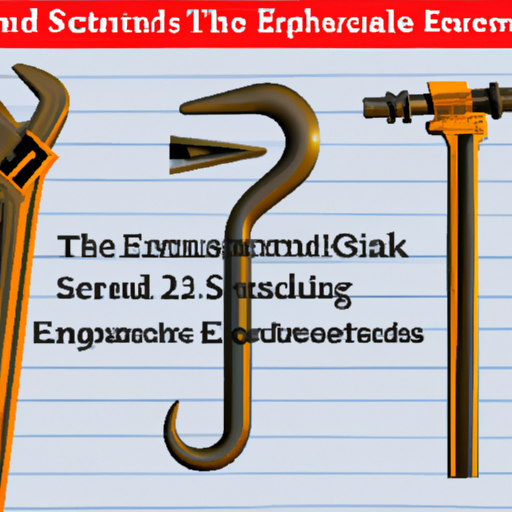The Essential Guide to Sucker Rod Wrench Hooks: An Indispensable Tool for Oilfield Operations

Introduction:
In the oil and gas industry, the efficient extraction of crude oil relies on a myriad of specialized tools and equipment. One such vital tool is the sucker rod wrench hook, an essential component in well servicing operations. This article aims to provide a comprehensive understanding of sucker rod wrench hooks, their purpose, types, usage, benefits, and maintenance practices. So let's dive into the world of sucker rod wrench hooks and explore their significance in the oilfield industry.
1. Understanding Sucker Rod Wrench Hooks:
Sucker rod wrench hooks are mechanical devices designed to provide a secure grip on the sucker rods used in oil well operations. These hooks are generally attached to a sucker rod wrench, forming a reliable connection between the wrench and the sucker rod. The primary purpose of a sucker rod wrench hook is to facilitate the safe and efficient installation, removal, and maintenance of sucker rods in oil wells.
2. Types of Sucker Rod Wrench Hooks:
a. Manual Sucker Rod Wrench Hooks: These traditional wrench hooks require manual effort to tighten or loosen the sucker rods. They are commonly used in low-intensity operations and provide a cost-effective solution for many oilfield applications.

b. Hydraulic Sucker Rod Wrench Hooks: Hydraulic wrench hooks utilize hydraulic systems to provide the required force for tightening or loosening sucker rods. These hooks are particularly useful in high-intensity operations, as they offer increased power and precision, minimizing the physical strain on the operator.
3. Usage and Benefits of Sucker Rod Wrench Hooks:
a. Efficient Rod Installation: Sucker rod wrench hooks enable oilfield workers to quickly and securely install sucker rods, ensuring smooth operation and minimizing downtime. The hooks' reliable grip prevents slippage, even in challenging conditions, allowing for the efficient assembly of the entire sucker rod string.
b. Safe Rod Removal: During maintenance or replacement operations, sucker rod wrench hooks ensure safe and controlled rod removal. The hooks' sturdy construction and reliable grip prevent accidents and injuries by minimizing the risk of dropped rods or sudden releases of tension.
c. Enhanced Productivity: Sucker rod wrench hooks significantly improve operational efficiency by reducing the time required for rod installation and removal. With their ease of use and secure grip, these hooks enable oilfield workers to complete tasks more quickly, leading to increased productivity and cost savings.
d. Versatility in Challenging Environments: Sucker rod wrench hooks are designed to withstand harsh oilfield environments, including extreme temperatures, corrosive substances, and high-pressure conditions. Their durable construction and specialized materials ensure longevity, making them suitable for both onshore and offshore applications.
e. Operator Safety: By providing a secure grip on sucker rods, wrench hooks minimize the risk of accidents and injuries. They enable operators to exert force without straining their bodies, reducing the chances of musculoskeletal disorders commonly associated with manual labor.
4. Maintenance Practices for Sucker Rod Wrench Hooks:
To ensure the longevity and optimal performance of sucker rod wrench hooks, regular maintenance is crucial. Here are some essential maintenance practices to follow:
a. Inspection: Regularly inspect the hook's condition for signs of wear, deformation, or corrosion. Replace any damaged or compromised components promptly.
b. Lubrication: Apply an appropriate lubricant to the hook's moving parts to reduce friction and prevent rust formation. Follow the manufacturer's guidelines for lubrication frequency and recommended products.
c. Storage: Store the wrench hooks in a clean, dry, and well-ventilated area to prevent exposure to moisture or corrosive substances. Proper storage ensures that the hooks remain in optimal condition when not in use.
d. Calibration: If using hydraulic wrench hooks, periodically check and calibrate the hydraulic systems to ensure accurate force application. Calibration should be performed by trained professionals or in accordance with the manufacturer's instructions.
e. Training and Education: Provide comprehensive training to oilfield workers on the proper usage, handling, and maintenance of sucker rod wrench hooks. This ensures that operators are knowledgeable and skilled in maximizing the tool's effectiveness while ensuring their safety.
Conclusion:
Sucker rod wrench hooks play a vital role in the efficient operation and maintenance of oil wells. Their secure grip, ease of use, and durability make them indispensable tools for oilfield workers. By facilitating safe and efficient installation, removal, and maintenance of sucker rods, these hooks contribute to increased productivity, minimized downtime, and enhanced operator safety. Regular maintenance and adherence to best practices ensure the longevity and optimal performance of sucker rod wrench hooks, making them a valuable investment for oil and gas companies worldwide.




 8613371530291
8613371530291